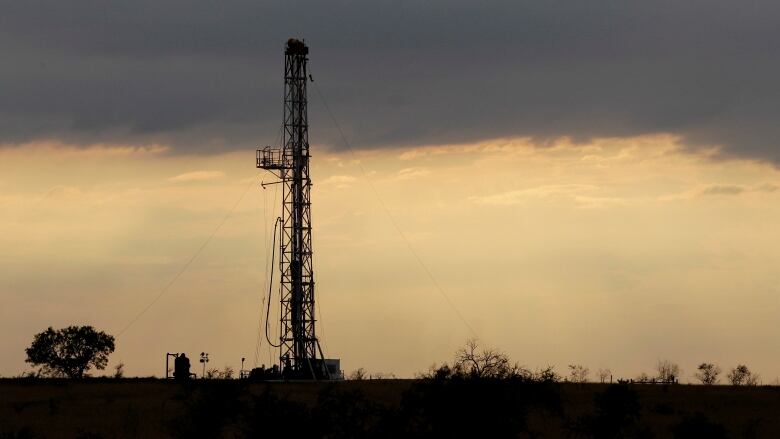Oilpatch pain will continue, say 3 wise men
With oil trading under $40 US a barrel, more cuts predicted in energy sector

The prevailing mood in Albertaright now is low-simmering anxiety.
This has been a season of pain for the oilpatch. On June 1, oil was trading at $60US per barrel. Now it is trading under $40 a barrel,puttingan end to any hopesthat the downturn would be short.
The Saudis have decided they're going to protect market share and prices can go where they go.- Charlie Fischer, former chief executive, Nexen
As the days begin to cool off, and people return to work after their summer holidays,the energy sectorhas tofigure out how to survivewith oil at a level where few companies can turn a profit.
This downturn different
CBC News asked three veteran oilpatch playersto weigh on the most recent gyrations of the energy market. Energy executives often mark their careers by how many downturns they've survived. But all three agreed that thisone feels different.
"I think things have changed substantially," said Jim Gray, who got his first job intheoilpatch in 1956 and went on to found Canadian Hunter Exploration.
"I think this downturn is not one of the typical onesnow that we know more about it and we're into it. The others have been more a result of supply and demand and this is a result of technology."
Price war
Gray suggests that development of horizontal drilling and multi-stage hydraulic fracturing for oil and gasis the most important change in the industry since the invention of the rotary drillin the 1930s. One thathas shiftedthe balance of supply and demand around the world.
Shale oil production in the U.S.prompted Saudi Arabia to begin a price war last fall. But maps show that 80 per cent or more of the world's shale oil and natural gasis found outside of North America.
"We're the laboratory," said Gray. "We're showing how to do it. We have the infrastructure, highways, pipelines, roads, engineers, but it is starting very, very gradually to pick up elsewhere in the world."

What are Saudis thinking?
Saudi Arabia is well aware of the growth in shale oil and has been working to protect its market share over the past year by drivingprices down to the point where it becomes too expensive to frack.
Since Saudi Arabia is keeping its cards close to its chest, it's impossible to figure out just how far the country is willing to go with this strategy. It is among the lowest cost producers in the world, with the cost per barrel estimated at anywhere from $4 to $20 per barrel.
Saudi Arabia supports its entire princes and palaceseconomy with oil profits. Gasoline costs only 16 cents a litre, and there is no income tax, but the country is burning throughits savings at a rapid clip. The International Monetary Fund estimates that it will run a $130-billion US deficit this year.
"For the better part of my working career, OPEC wasmanaging [the oil market] tosee higher prices," said Charlie Fischer, former chief executive ofNexen.
"They were the swing producers. Today, the Saudis have decided they're going to protect market share and prices can go where they go."
More cuts coming to Alberta
Canada's energy sector has no control over the price of oil, but it does have control of its spendingand that is where the painwill come in the fall.
At the beginning of the downturn, the energy sector hoped it would be short and was reluctant to let people go, given how difficult it is to find workers when the price recovers.
"They have beenreticent to address the cost structure to the extent that they need to,"said David Collyer, former chief executive of the Canadian Association of Petroleum Producers.
"They have put off cutting costs and some of the action on the people side that they may need to address as we get into the fall."
World oversupplied with oil
The world continues to be oversupplied with oil. In the second quarter, 96 million barrels a day were being produced and 93 million barrels consumed.
That imbalance should begin to correct itself next year.
U.S. shale production has started to fall, which is a positive for the oil market. But questions remain about demand from China and Europe and even the U.S. after the summer driving season ends.
"There will be an increase in the price of oil," Gray said. "But, it has to do with growth in the market, from India and China.
"Peoplehave very different ideas of what recovery means. Ifthey mean 60 or 65 bucks a barrel, a modest recovery, that's entirely possible."












_(720p).jpg)


 OFFICIAL HD MUSIC VIDEO.jpg)
.jpg)



























































































